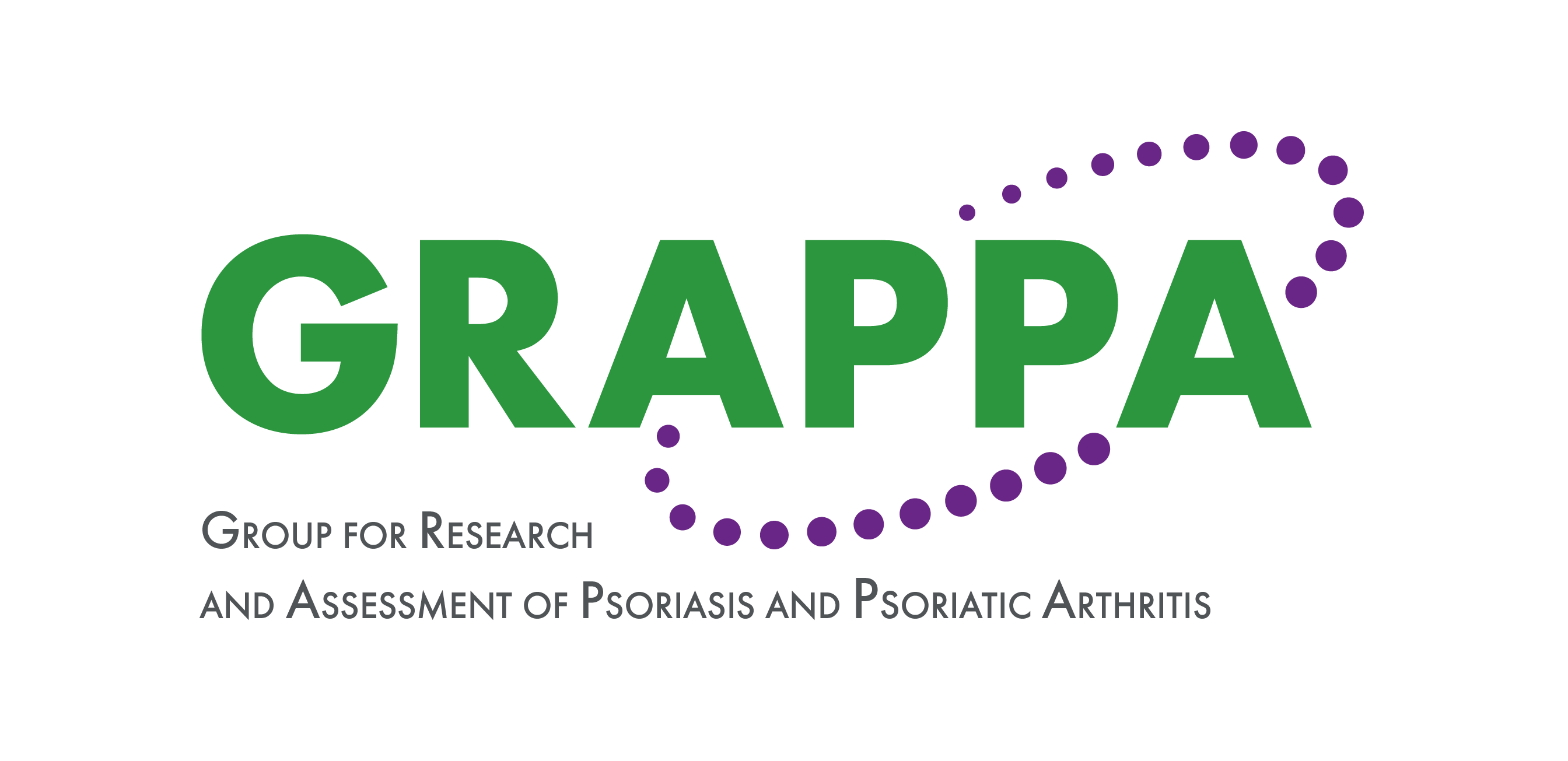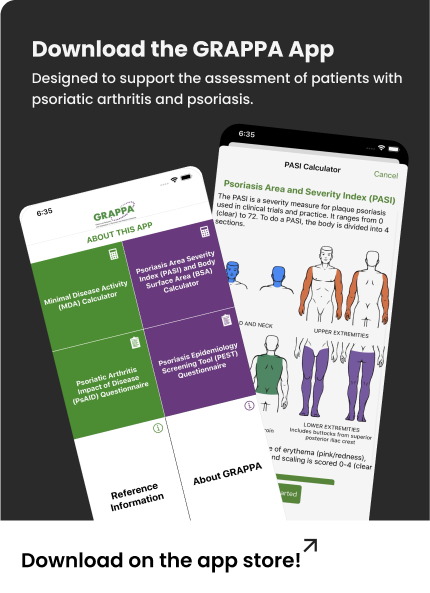
Axial Involvement in Psoriatic Arthritis Cohort
Brief description of the AXIS Study:
Involvement of the axial skeleton (sacroiliac joints and / or spine) is a relatively frequent manifestation associated with psoriatic skin disease, mostly along with involvement of peripheral musculoskeletal structures (peripheral arthritis, enthesitis, dactylitis), which are referred to as psoriatic arthritis (PsA). Data suggest that up to 30% of patients with psoriasis have PsA. Depending on the definition used, the prevalence of axial involvement varies from 25% to 70% of patients with PsA. However, there are currently no widely accepted criteria for axial involvement in PsA. The overarching aim of the Axial Involvement in Psoriatic Arthritis (AXIS) study is to systematically evaluate clinical and imaging manifestations indicative of axial involvement in patients with PsA and to develop classification criteria and a unified nomenclature for axial involvement in PsA that would allow defining a homogeneous subgroup of patients for research.
Study Principal Investigators:

Dafna D Gladman
University of Toronto
Senior Scientist, Schroeder Arthritis Institute, Krembil Research Institute Deputy Director, Centre for Prognosis Studies in The Rheumatic Diseases Toronto Western Hospital, 399 Bathurst St. 1E-410B
Toronto, Ontario, Canada M5T 2S8

Prof. Dr. Denis Poddubnyy
Charité – Universitätsmedizin Berlin
Campus Benjamin Franklin
Department of Gastroenterology, Infectiology and Rheumatology Hindenburgdamm 30
12203 Berlin, Germany
Primary Research Coordinator

Murat Torgutalp, MD
Charité – Universitätsmedizin Berlin
Campus Benjamin Franklin
Department of Gastroenterology, Infectiology and Rheumatology Hindenburgdamm 30
12203 Berlin, Germany
Study Population:
The population of interest will consist of consecutive adult patients diagnosed with PsA and fulfilling the CASPAR (ClASsification criteria for Psoriatic ARthritis) classification criteria for PsA with symptom duration of up to 10 years and not receiving biological or targeted synthetic disease modifying antirheumatic drugs (b or tsDMARDs). Participating rheumatologists are encouraged to include consecutive PsA patients not treated with biologic or a targeted synthetic disease-modifying antirheumatic drug because of their potential impact on active inflammatory changes in the axial skeleton, which will be the focus of the current study.
A total of 400 participants will be recruited for this study according to following eligibility criteria:
Inclusion criteria:
1) Age ≥ 18 years.
2) Definite diagnosis of PsA.
3) Fulfilment of the CASPAR criteria for PsA. 4) Duration of PsA symptoms ≤10 years.
5) Written informed consent.
Exclusion Criteria:
1) Unable or unwilling to give informed consent or to comply with the protocol.
2) Current or past treatment with biologic or a targeted synthetic disease-modifying antirheumatic drug (DMARDs).
3) Contraindications for MRI and/or plain radiograph examination of sacroiliac joints and spine.
Study Procedures
All study participants will complete the following procedures:
- Clinical assessment
-
Physical examination by a physician and patient questionnaires
-
- Laboratory assessment
-
C-Reactive protein (CRP), Erythrocyte sedimentation rate (ESR), and HLA-B27 status. In addition,
a blood sample (conventional 4 ml EDTA vacutainer) for a subsequent HLA-typing will be collected.
-
- Imaging
-
Plain radiography and magnetic resonance imaging (MRI) of sacroiliac joints and spine.
-
- Local assessment of the presence of axial involvement
- Central assessment of the presence of axial involvement
-
The study will have a central imaging committee consisting of rheumatologists and musculoskeletal radiologists with expertise in psoriatic arthritis and axial spondyloarthritis, and a central clinical committee consisting of rheumatologists.
-
Anticipated study outcome:
The frequency of axial involvement in a cohort of patients with PsA according to the local and central assessments will be calculated. This study will help generate the required data for the development of unanimously accepted definition/classification criteria and proper assessment tools for axial involvement in patients with PsA, that will allow to have a homogeneous subgroup of patients with axial involvement for further research.
Study Sites & Co-Investigators:
This is a multicenter, multinational, cross-sectional study in patients with a definite diagnosis and classification of PsA. Eligible patients will be recruited prospectively from more than 50 research centers worldwide. The primary coordinating center is Charité – Universitätsmedizin Berlin, in Berlin, Germany.

